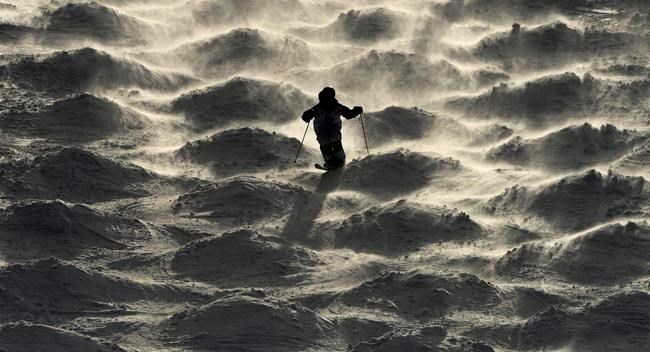CALGARY — Self-described "ski bum" Matt Mosteller has never been injured on the slopes, in spite of a thirst for adventure that's taken him as far afield as Japan, New Zealand, South America, Europe, and Alaska in search of the fluffy stuff.
"I've been very lucky," said the 57-year-old B.C. man, who holds down a day job as a senior executive with Resorts of the Canadian Rockies, but spends much of his free time searching the world for the best powder snow.
"Skiing’s provided me with joy and freedom for going on 50 years now, and I’ve actually only been injured when I’ve been doing other activities in the mountains besides skiing. So I’ve been very fortunate.”
Mosteller is just one of what are 2.7 million active skiers and snowboarders in Canada, according to the Canadian Ski Council. And right now, many of those 2.7 million people are making plans to enjoy the blue skies, fun events and après-ski patio hangouts that define the spring skiing season — which in parts of the country extends into May.
While the risk of injury may be low on many of these fun-seekers' minds, experts say all skiers would be wise to protect themselves — not just bodily, but also financially.
According to data from the Canadian Institute for Health Information, 1,317 people were hospitalized in Canada in 2020-21 for ski or snowboard injuries. That's fewer people injured skiing than while cycling or riding all-terrain vehicles, but more than most other sports including skateboarding and snowmobiling.
“It is quite common that we do hear about people who are injured on the slopes," said Toronto-based personal injury lawyer Rajiv Haté of Kotak Law.
"Whether it’s skiing or snowboarding, we often do get calls about injuries of this nature.”
Haté said while ski resorts usually have guests sign waivers before hitting the slopes, skiers should keep in mind that waivers don't absolve resort operators of liability due to negligence.
"An example is a slip and fall on the stairs because they didn’t clear the sidewalk, or a breakdown on a chairlift that results in someone being injured," he said.
“If you have suffered a ski injury, you may have legal rights and depending on the circumstances surrounding the injury, also compensation."
He added it's also a good idea for skiers to check what kind of insurance coverage they have, depending on what type of skiing they're doing and where.
Nikola Berube, director of sales for the Alberta Motor Association's travel division, said recreational skiing at a resort is usually covered under a typical travel medical insurance policy.
"We recommend anyone traveling outside of their home province, even within Canada, that they obtain travel medical insurance," Berube said, adding the out-of-province protection provides coverage for ambulance, air ambulance, emergency dental coverage and other services not provided under a provincial health care plan.
However, Berube cautioned that if your ski vacation runs a bit more to the wild side, it will be important to check if your travel medical policy covers it — and it's worth taking a look at what your life insurance policy covers as well.
“If you’re doing things like heli-skiing or CAT-skiing, or skiing or snowmobiling in avalanche country, you really want to check and make sure if there are exclusions in your life insurance policy," she said.
Mosteller said the Alpine Club of Canada (ACC) sells a travel insurance product aimed specifically at the type of thrill-seeking activities its members do. Unlike many other providers, the club's Adventure Sports Optional Coverage is available to cover mountaineering, backcountry skiing and ice climbing.
The ACC's product will even cover emergency air evacuation from the mountains, if medically required.
Mosteller said with time, he's developed more of an appreciation for the need to protect himself against unlikely eventualities, while still having fun and chasing that powder.
"It certainly does enter your mind more as you age," he said. "Starting out at a young age, and doing these adventures, it probably wasn't a front-of-mind issue for me."
“But I would now tell Canadians who do plan to ski internationally or in the U.S. — or even into another province, especially if they are going to do a back country skiing experience — it probably is highly recommended to get travel insurance.”
This report by The Canadian Press was first published April 6, 2023.
Amanda Stephenson, The Canadian Press



